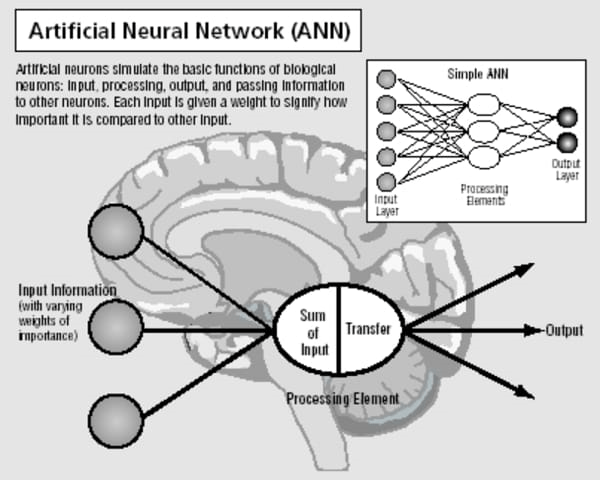Machine Learning is Inspired by the Structure of the Brain
The creation of algorithms and models will allow computers to learn from data and make predictions or judgments that are based on that data without the need to be specifically programmed, and this overall process is referred to as machine learning. Large quantities of data are usually put into the model or an algorithm in order to find patterns, correlations, and trends.
Through the use of this process of learning from data, machine learning algorithms may steadily improve their performance on a given task.
Natural language processing, image and audio recognition, recommendation systems, and predictive analytics are some typical uses of machine learning.

Machine learning is impacted by the structure of the brain in one way—through artificial neural networks. The networks mentioned above are composed of layers that are of interconnected nodes, much to the connections between brain neurons.
Each node present in an artificial neural network consists of information from other nodes, does calculations, and then transmits its findings to other nodes in the different layers.
By adjusting the strength of the connections between the nodes, the network can help to learn and to recognize patterns and make predictions based on the input data.
In general, the concept behind using neural networks is for information processing and learning from data which is based on the assumption that the brain is capable of doing it very effectively and also through which one can develop more complicated and flexible systems by simulating this process in computers.
The most common type of broadly use machine learning is the neural networks, or it is also known as networks of neurons. They are modeled after the way the human brain was organized. Neural networks are constructed from layers of interconnected neurons, or nodes, that collaborate to assess the input and draw conclusions or predictions.
These networks are capable of learning to identify patterns in data, categorize photos, produce text, and carry out a variety of other activities.
By changing the weights of the connections between nodes during training, the network gains the ability to spot patterns in the input pictures. For instance, based on the pixel patterns that often make up images of cats, the network may learn to recognize a particular item, like a cat.
Artificial neural networks used for image identification tasks have significantly advanced disciplines like computer vision by allowing robots to accurately recognize objects and patterns in pictures. This is only one illustration of how machine learning draws inspiration from the structure of the brain and how simulating brain functions may result in strong and efficient systems.
Ways through which the structure of the brain is linked with machine learning
Brain anatomy and machine learning have a number of relationships. The brain is a complex biological structure that was developed over millions of years in order to process and retain information.
One of the fundamental links between the anatomy of the brain and machine learning is considered to be the key concept of artificial neural networks. Artificial neural networks are computer models that draw inspiration from the composition and operation of organic brain neurons. They are made up of linked "neurons" or nodes that may process information and send messages to other nodes,
There are numerous other ways that the structure of the brain and machine learning are connected and that is through the study of cognitive neuroscience. The objective of the field of research known as cognitive neuroscience is used to understand the brain mechanisms underlying cognitive activities such as perception, attention, memory, and decision-making. Researchers who have been studying the anatomy and operation of the brain can create new machine-learning algorithms and models by understanding more about how the brain and processes information.
Yes, machine language is inspired by the structure of the brain, it is exactly the way neurons in the brain are connected through which various processes and data is analyzed. Machine learning is based on the idea that Aare to the given examples of data, computers can learn new abilities and also enhance their performance at jobs, much like normal people can do.
Overall, the relationship between brain anatomy and machine learning is complex and diverse, and researchers in both domains are trying to learn more about it.